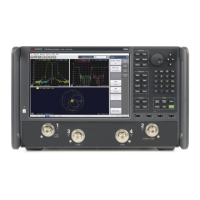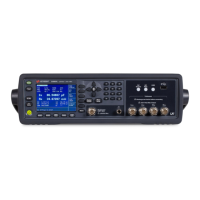3 Programming the Analyzer
IEEE 488.2 Common Commands
dependent error, status execution error, command error, and power on. The selected bits are OR’d to
become a summary bit (bit 5) in the byte register which can be queried.
The query returns the state of the standard event status enable register.
Key Path
No equivalent key. Related key System, Show Errors, Clear Error Queue
Remote Command
*ESE <integer>
*ESE?
Example *ESE 36 Enables the Standard Event Status Register to monitor query and command errors (bits 2
and 5).
*ESE? Returns a 36 indicating that the query and command status bits are enabled.
Notes For related commands, see the STATus subsystem and SYSTem:ERRor[:NEXT]? commands.
Preset 255
State Saved Not saved in state.
Min 0
Max 255
Status Bits/OPC
dependencies
Event Enable Register of the Standard Event Status Register.
Initial S/W Revision Prior to A.02.00
Standard Event Status Register Query
Queries and clears the standard event status event register. (This is a destructive read.) The value
returned is a hexadecimal number that reflects the current state (0/1) of all the bits in the register.
Remote Command
*ESR?
Example *ESR? Returns a 1 if there is either a query or command error, otherwise it returns a zero.
Notes For related commands, see the STATus subsystem commands.
Preset 0
Min 0
Max 255
Status Bits/OPC
dependencies
Standard Event Status Register (bits 0 – 7).
Initial S/W Revision Prior to A.02.00
Identification Query
Returns a string of instrument identification information. The string will contain the model number, serial
number, and firmware revision.
The response is organized into four fields separated by commas. The field definitions are as follows:
• Manufacturer
EMI Receiver Mode Reference 143

